Fall is settling in, winter slowly comes into view. Walking off season is a beautiful experience, that still required some caution… especially when in the mountains. Getting lost and/or have a serious accident comes way faster when there is fog or snow!
To limit damages, the Spanish stretch of the Saint-Jean-Pied-de-Port/Roncesvalles stage knows a winter closure from November 1st to March 31st.
Practical explanations now!
Updated: October 2023 🍂🌰
What stretch?
A governmental measure
It has nothing to do with weather!
What if you disregard the closure?
How to complete the stage during the closure?
Recap
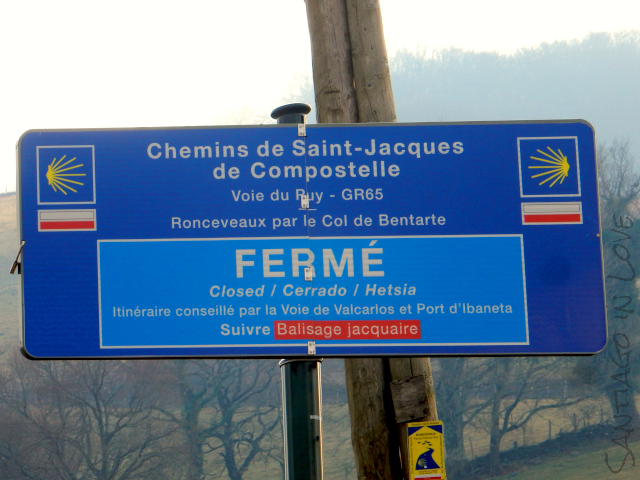
What stretch?
A little reminder! There are 2 options to go from Saint-Jean-Pied-de-Port to Roncesvalles: the high route (or route Napoleon) and low route (going through Valcarlos).
The high route is the main path, preferred by most pilgrims: it follows the GR65 and GR12. The low route is an alternate itinerary, recommended when bad weather is expected.
The winter closure applies to the high route, on its Spanish stretch only.
As such, the restriction starts at the border, where pilgrim reach Bentarte’s pass and fountain (also called “Roland’s fountain”). The Camino continues to the Lepoeder pass, where pilgrims can reach Roncesvalles directly by continuing on the GR64 or by switching to the GR12 that goes through the Ibañeta pass.
The winter closure applies to both the GR65 and the GR12. Note that the restriction does not apply to the stretch from Ibañeta to Roncesvalles.
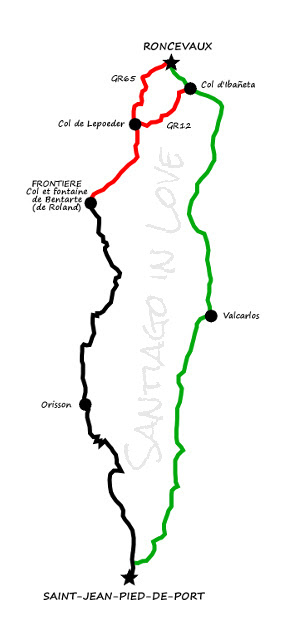
Red: GR65 and GR12 in Spain, CLOSED
Green: Valcarlos route, RECOMMENDED
A governmental measure
The winter closure has nothing to do with the weather (we’ll get into that in a bit) or your personal experience (even if you climbed Everest without oxygen!).
It’s a legal measure voted by government of Navarra that applies to everybody. As such, going through the high route or the low route is not a decision left up to you but a formal ban you are expected to respect, or else face sanctions.
Why? Because every year, too many pilgrim get in trouble on the high route and have to be rescued. Between November and May, the region of Navarra counted 30 rescues in 2013, 42 in 2014 and 48 in 2015!
Understandably, Navarra got tired of dedicating a huge budget to rescue unreasonable pilgrims in harsh conditions and of risking the lives of first-aiders. They decided to take preventive measures.
Here’s an example of a rescue in harsh weather:
Clear bills of law
A first decree was voted in 2015 to bluntly ban pilgrim from accessing the Spanish stretch of the high route during winter. It was cancelled in 2016 and replaced by another and more specific decree.
Since then, Navarra publishes every year a new decree that states the dates and conditions of the winter closure for the stage to Roncesvalles.
You can find here the decree for this year (2024-2025).
If you’re curious, here are the ones for:
2016-2017 // 2017-2018 // 2018-2019 // 2019-2020 // 2020-2021 // 2021-2022 (unavailable) // 2022-2023 // 2023-2024
What is the content of the decrees ?
As any legal text, those decrees are not exactly enjoyable to read… So here are the important points you should know about:
- Context and assessment:
- features of the stage and of difficulty in winter: important ascents/descents, poor communication network, coverage of signalization by snow, passage only possible by the Lepoeder pass
- characteristics of the pilgrims doing the stage: increasing number of pilgrims, lack of appropriate physical condition for a majority of them
- reasons for rescues: physical breakdown, lack of information and/or preparation regarding the difficulty of the stage, lack of appropriate gears
- problems met by rescue teams: bad accessibility, great difficulties to locate and evacuate pilgrims, endangerment of first-aiders
- Decision and features: winter closure of the Camino, in order to keep pilgrims safe
- prohibition to be on the Eastern variant of the Camino (high route), from November 1st to March 31st
- ban starts at the border
- transit redirected on the Western variant of the Camino (low route through Valcarlos)
- signalization will inform pilgrims about the closure
- the Navarre police enforces the prohibition and is allowed to sanction trespassers
- Good to know: it’s not possible anymore to request an special authorization to go on the high route during the winter closure!
What about the French part of the stage ?
France doesn’t issue any winter closure so in theory, the high route is open until the border.
However:
1) the high route in winter is the just as difficult on the French side than on the Spanish side
2) once at the border, the only option to get to Roncesvalles is the path closed by Navarra!
For those reasons, the Pilgrim’s Office and the Saint Jean Pied de Port’s police cooperate with Navarra to redirect pilgrims to the low route through Valcarlos
It has nothing to do with the weather!
The winter closure has NOTHING to do with the weather, the given time-period is completely arbitrary.
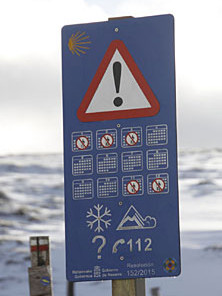
Whether it’s 30°C and sunny or -10°C and snowy, the stretch between the border and Roncesvalles is open from April 1st to October 31st and closed from November 1st to March 31st.
What does that mean?
When the section is open, from April 1st to October 31st, you can go on the high route freely. Going to Roncesvalles this way or not is your responsibility: it’s up to you to make a choice that fits the weather. Whatever your decision, you can go on the high route without breaking the law and rescue will be covered if you get in trouble.
This, even if the weather is terrible! You should be aware that it’s common to get snow in altitude until May, or thunderstorms in summer. You can also get rain, wind, fog and cold temperature on this stage all year round!
In case of bad weather, even if you can be on the high route, be realistic and reasonable! Prefer an other option to get to Roncesvalles.
For more on the opening of the high route, check this page.
When the section is closed, from November 1st to March 31st, passage on the high route is prohibited. As said before, you have no choice. If you set a toe there and if you get caught, you’re simply outside the law.
This, even it the weather is great, which happens more and more frequently in the region! Warm sun and 25°C in the dead of winter, it’s become normal in the Basque country… It can be nice enough to wear T-shirts or to eat outside! Still, the high route remains closed.
Of course, when the weather is horrible, it goes without saying that pilgrims should avoid the high route. But as I like to say, what goes without saying goes better when we say it!
Trespassing during the winter closure has consequences, and they quickly become quite serious if you need to be rescued. Let’s get into that right now!
What if you disregard the closure of the Camino ?
Pilgrims who chose to ignore the winter closure of the high route expose themselves to sanctions. Just being on the section is punishable by a fine. Even if the weather is amazing, even if you’re doing great.
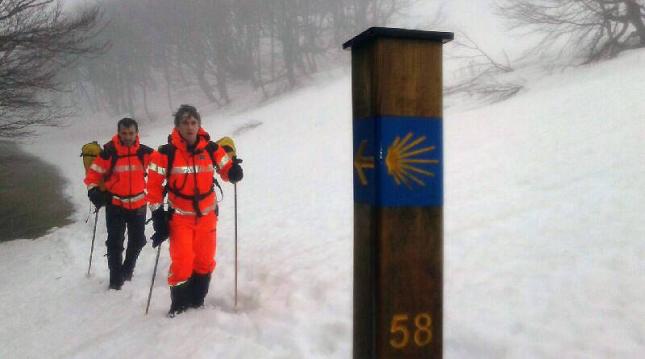
Photo: Bomberos de Burgete, 2016
In case you need help, the cost of the rescue can fall to you.
Rescue parties are generally a free public service in Spain, but not in some regions. Like Navarra! Since 2001, the region regularly charges people for their rescue when they were reckless. As access to the high route in winter is prohibited since 2015, pilgrim who get in trouble there logically fall into this category.
Here are some example of the costs involved: 35€/h for each first-aider, 100€/h for a medical vehicle, 1400€/h for an helicopter transfer, 1800€/h if a rescue helicopter, and so on… (source: article 51 bis of this decree, updated by the article 12-5 of this law)
It’s still hard to grasp the actual cost of a rescue mission… So here are some more examples!
1,500€ for this rescue mission in February 2013: 5 Korean pilgrims who got stuck at the Izandorre shelter because of snow
5,360€ for this rescue mission in March 2016: a Brazilian pilgrim who fell into a ravine during a snowstorm (11 first-aiders, 12h rescue with a night in the mountain as medevac was impossible, 1 rescue helicopter… not including healthcare costs!)
450€ for this rescue mission in March 2016 (same source as above): a Brazilian pilgrim who suffered from exhaustion and hypothermia (4 first-aiders, 3h rescue, 1 vehicle)
Finally, even more serious than a fine or a steep bill…
Hiking in the mountain can be deadly in winter: too many pilgrims died between Saint Jean Pied de Port and Roncesvalles in that season. Even if the Camino is an amazing experience, even if the high route is considered as “mythical” or a “must-do”, that stage is not worth dying for.
To get to Roncesvalles, take the low route through Valcarlos!
Before we get into our options, let’s all take a moment here to remember all the pilgrims who never left the mountain…
How to complete the stage during the closure?
First, be well prepared and properly geared up! Considering the season, it’s essential whatever decision you make.
Be aware of what to expect when going on the Camino off-season (check this complete post), be meticulous when you prepare your gears, get familiar with your itinerary ahead of time, know what emergency number you should call in case of emergency (112!)
Then, another little reminder: the Pilgrim’s Office is open EVERYDAY and ALL year long! Especially in winter, stop by and get information there. Even if you’re so excited to go! You’ll get valuable explanations about the low route, the weather forecast and all sorts of useful tips. Think of asking for the leaflet for the stage!
Finally, go to Roncesvalles by the low route and Valcarlos. After the city-center, go up the street “rue d’Espagne” and go through the old fortifications. Not much further ahead is where the paths split. The high route goes straight forward, the low route through Valcarlos route turn on your right!
Even if you’re overcome by enthusiasm, a sign reminds you of the fork… no excuse! (see 1st picture below)
The marks to follow are yellow and blue signs with a green line (see 2nd picture below).
Now you just have to follow the trail and enjoy your stage: Buen Camino!
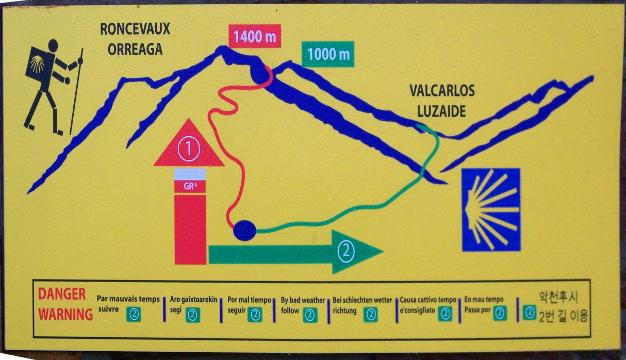

Recap
- From November 1st to March 31st: winter closure of the high route to Roncesvalles (Spanish section only, from the border)
- Legal prohibition: trespassers subject to fines and charged the cost of rescues
- Whatever the weather! The section is closed even if the weather is amazing
- Be thoughtful and wise! Make sure you have proper gears; stop by the Pilgrim’s Office, take the low route through Valcarlos
- Buen Camino! May Santiago watch over you!
Tips if in trouble
If you’re in trouble, call 112!
This is the emergency number that works everywhere in Europe, without unlocking your phone. It also works without a network: restart your phone and enter the number before you enter your PIN code.
Do NOT follow the bad advice to change your answering message!! Save your battery and your phone availability for possible calls from rescuers!
While you wait for rescue, keep warm!
Isolate yourself from the ground, put on more warm clothes and protect yourself from the weather.
What about you, Have you done Saint Jean Pied de Port-Roncesvalles between November 1st and March 31st?
Which route did you take? What were the conditions like and how easy/difficult was it?
Tell us with a comment! 😉

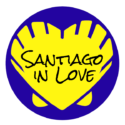
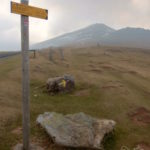

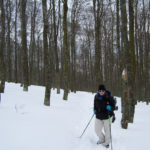
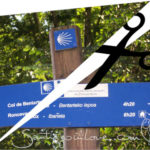
Hello
Is thid information still valid 2024-2025?
Hi 🙂 Yes, the Spanish part of the route will also be closed this season, from November 1st 2024 to March 31st 2025.
I’ll update the post will official info soon!It’s updated! 🙂Thank you for all your valuable information. I am walking the Camino Frances from 7 March this year and booked Ferme Ithurburia near St Michel for Saturday 8 March. I thought spring would be a good time! But now I realise the Spanish side of the Napoleon route is closed. Do you know if there is there any way to get from Honto to the Valcarlos route before the closure?
Many thanks, Natalie
Hi Nathalie 🙂 I’m not sure what you’re asking by “getting to the Valcarlos route before the closure“? The Spanish side of the Napoleon route is permanently closed from November 1st to March 31st so you definitely can’t pass there. The Valcarlos route is however always open, no closure date or time. To hop from the Napoleon to the Valcarlos route, you have 3 options:
1/ you still sleep in Honto and the next day, go back to SJPP to catch the Valcarlos route (on foot or with a taxi).
2/ you cancel your night in Honto, book something in SJPP and start from there. If you want to cut that stage in 2 days, you have accommodation options on the Valcarlos route that make it possible: find them on this page (and note that in winter, the best option is the albergue in Valcarlos)
3/ you still sleep in Honto and the next day, go off-Camino to walk from the Napoleon to the Valcarlos route through small roads. I really don’t recommend this because those roads come with a lot of elevation, can be difficult/dangerous in bad weather (snow, rain, fog), would add at least 1-2h to the normal stage and require you to have a detailed map of the area (paper or accessible offline) + strong orientation skills.
As for arriving on time in Roncesvalles, the albergue closes at 10pm… so you have plenty of time to walk!
Buen Camino!